Morning Eye Candy: Oooh … Aaah
Posted in Photography on July 4 2011, by Eddy Almonte
Even nature likes fireworks.
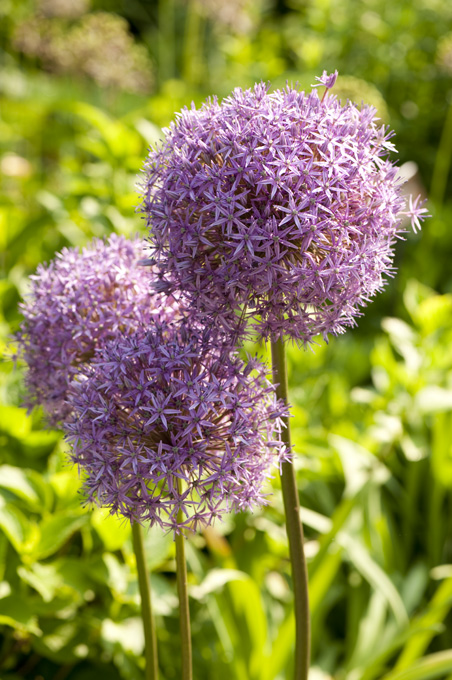
Allium ‘Globemaster’ (photo by Ivo M. Vermeulen)

Inside The New York Botanical Garden
Posted in Photography on July 4 2011, by Eddy Almonte
Even nature likes fireworks.

Allium ‘Globemaster’ (photo by Ivo M. Vermeulen)
Posted in Photography on July 3 2011, by Ann Rafalko
True, it’s a man-made rainbow, but it’s pretty all the same!
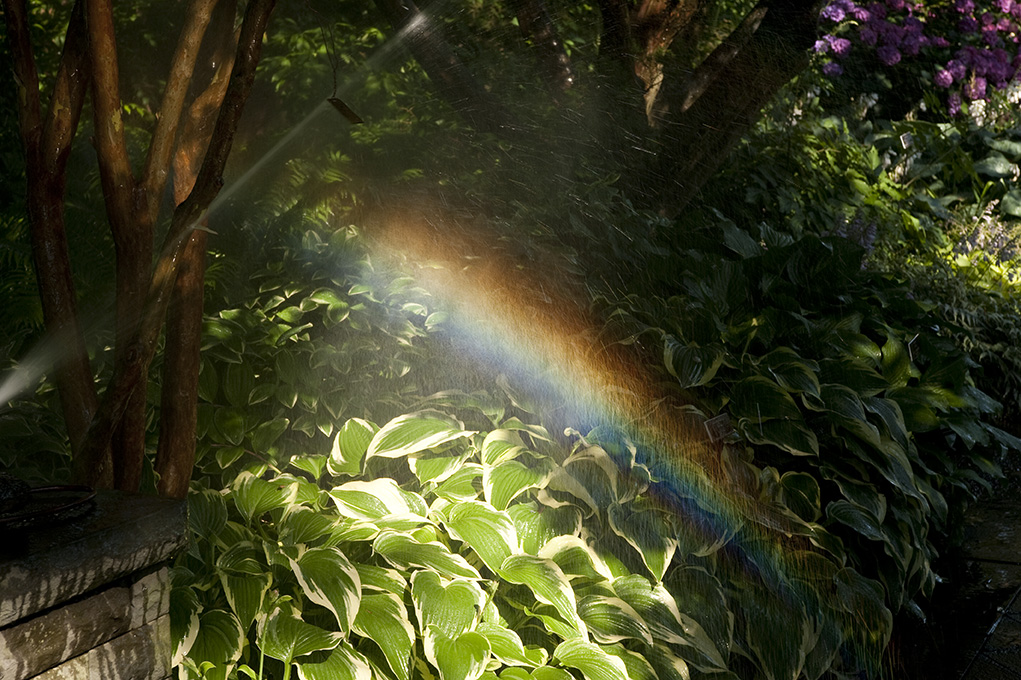
Perennial Garden Rainbow (photo by Ivo M. Vermeulen)
Posted in Photography on July 2 2011, by Ann Rafalko
Dasies in the Perennial Garden
Sunflowers at the Greenmarket
Photos by Ivo M. Vermeulen
Posted in What's Beautiful Now on July 1 2011, by Ann Rafalko
Seasonal Walk is an exuberant celebration of the seasons. Never the same two weeks in a row, this beautiful garden was designed by the famous landscape designers Piet Oudolf and Jacqueline van der Kloet. Bordering the Garden Cafe and the Enid A. Haupt Conservatory, Seasonal Walk in the early Summer is a dazzling display of sun-loving dahlias, garden phlox, and a range of lilies. At the eastern end of the walk an assortment of plants that thrive in the shade like ferns and astilbes can be found under a stand of trees. Keep your eyes open for the many different kinds of butterflies that flock to this colorful, beautiful garden.
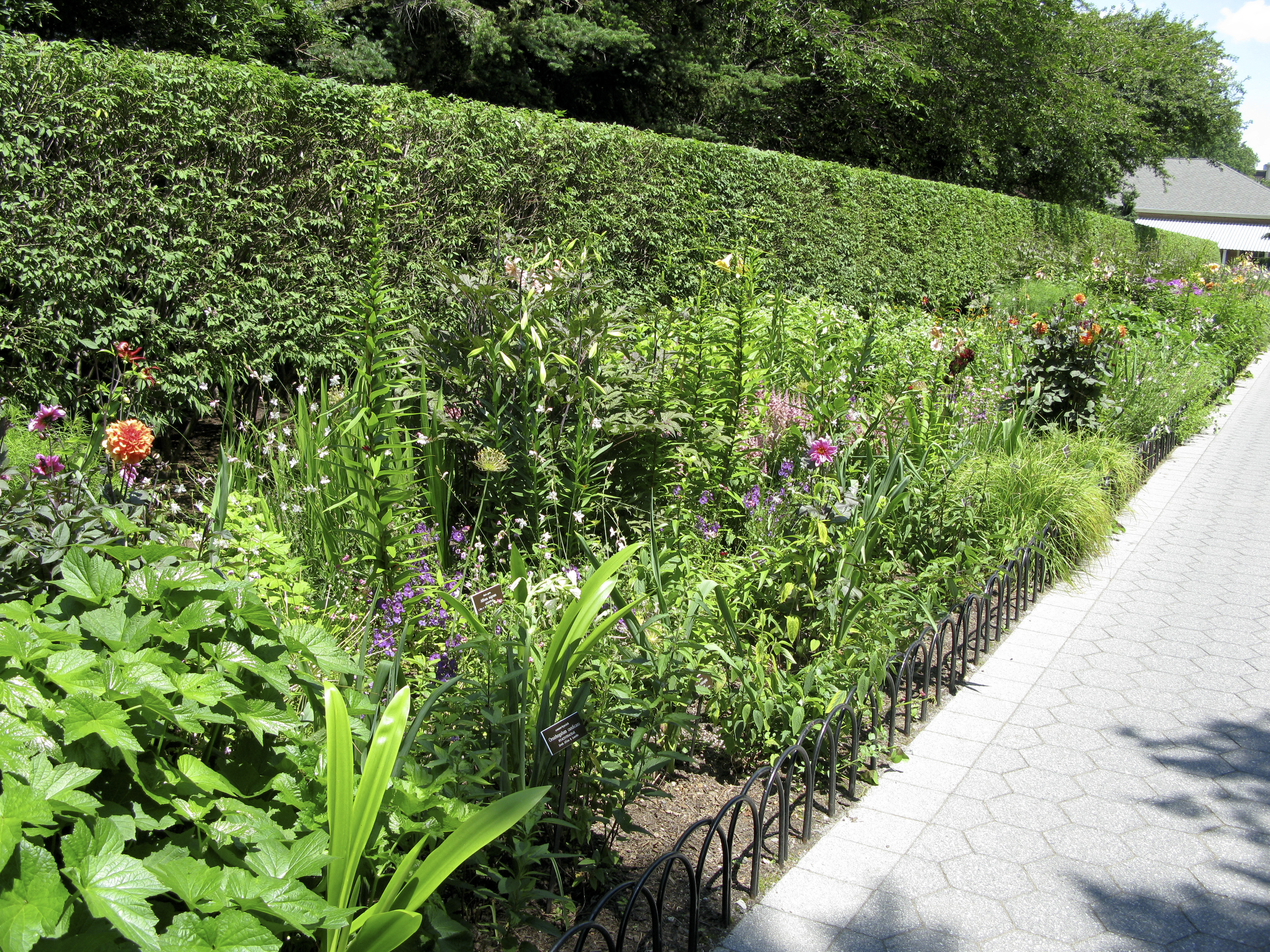
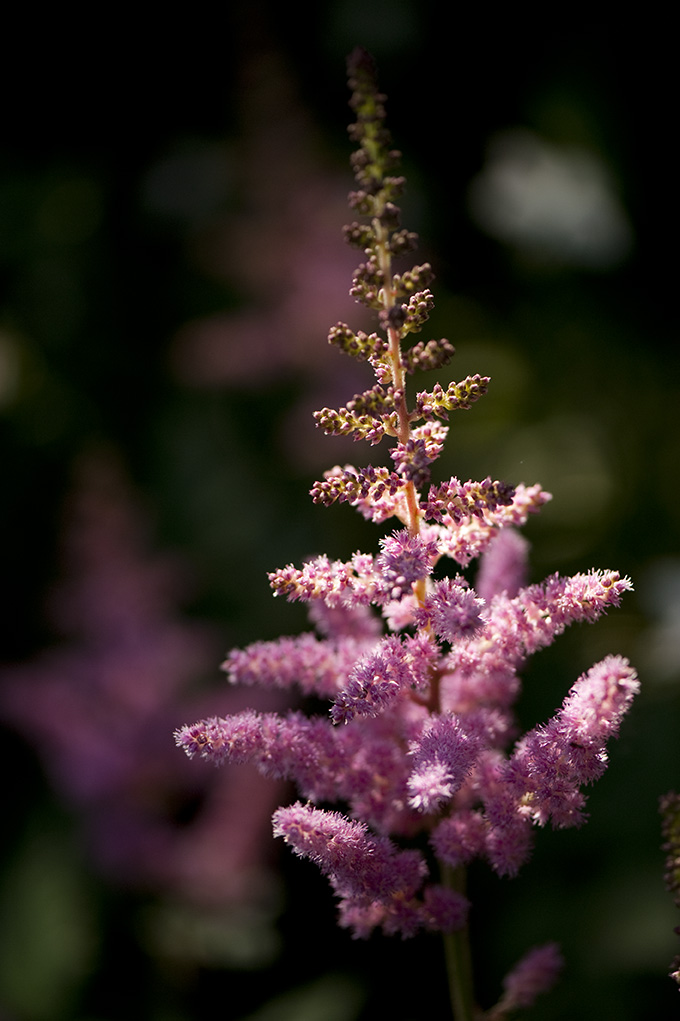
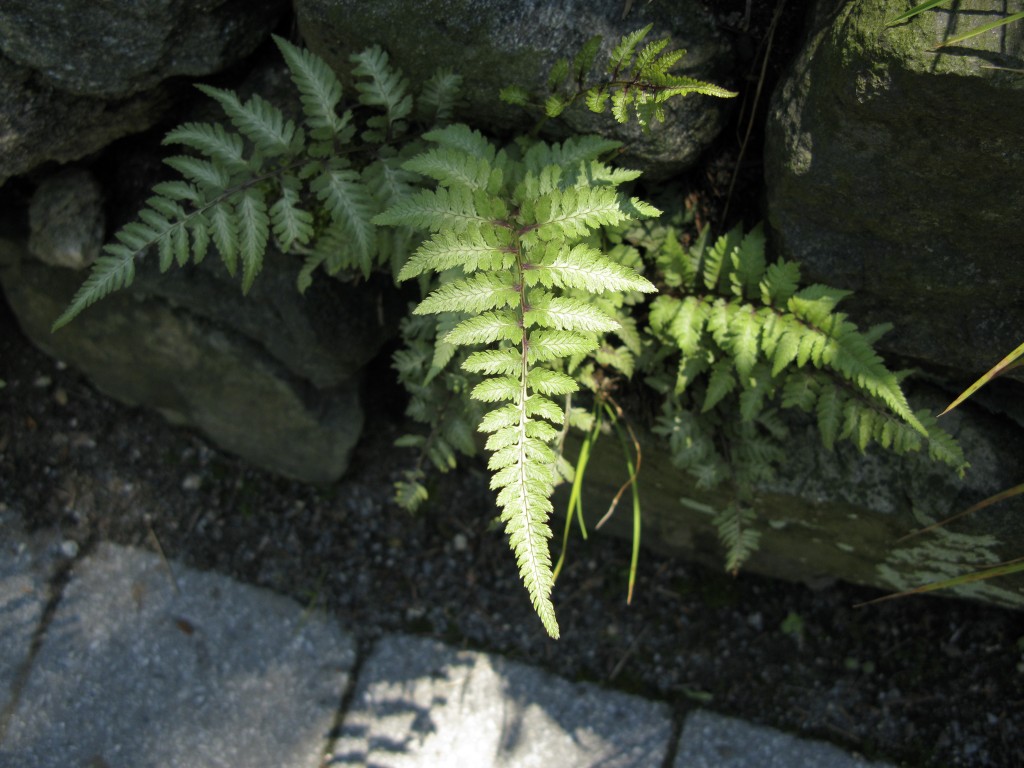
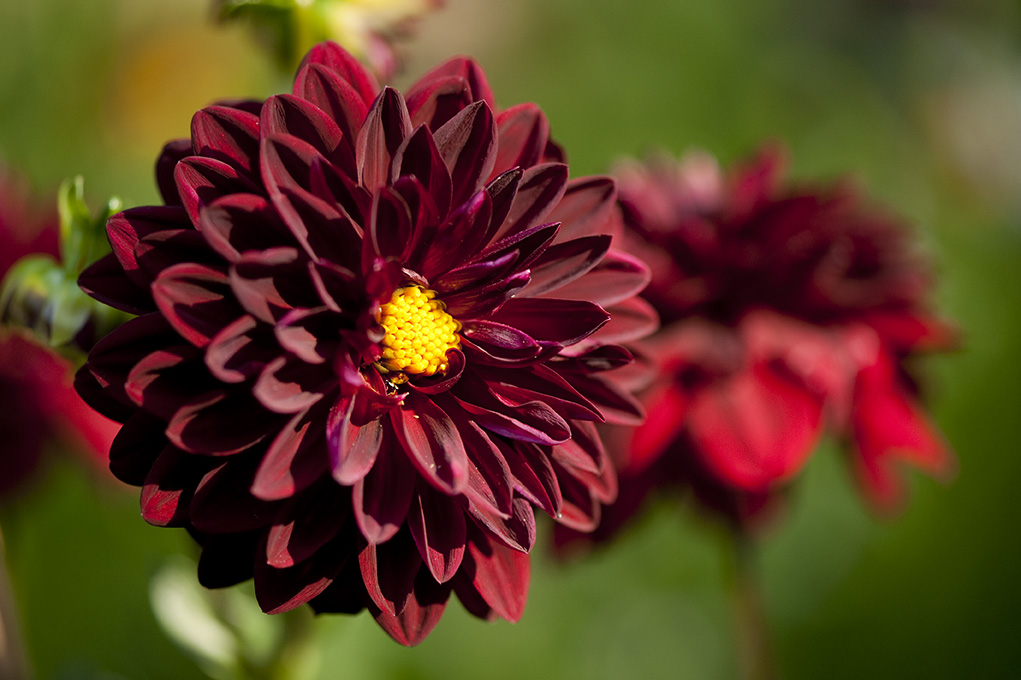
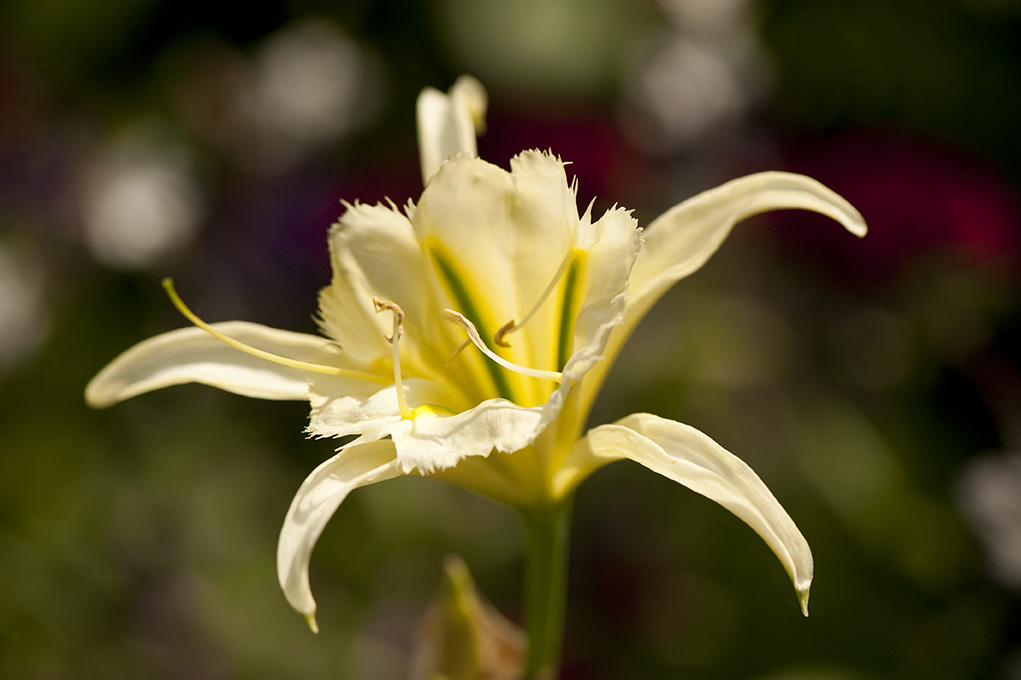
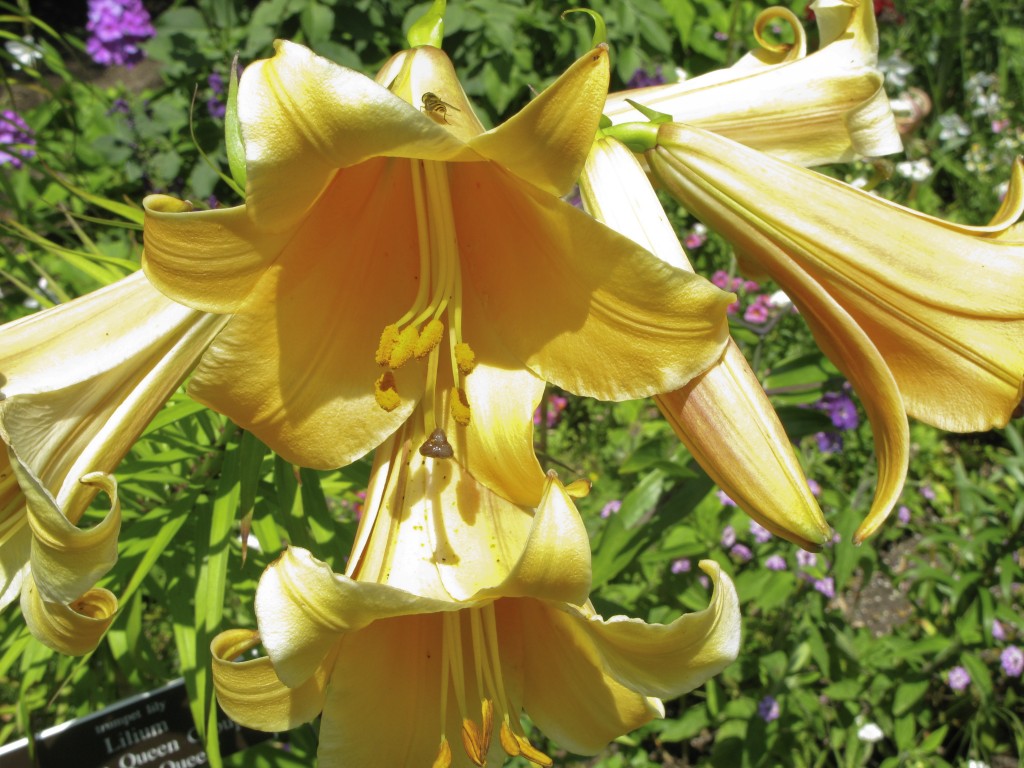
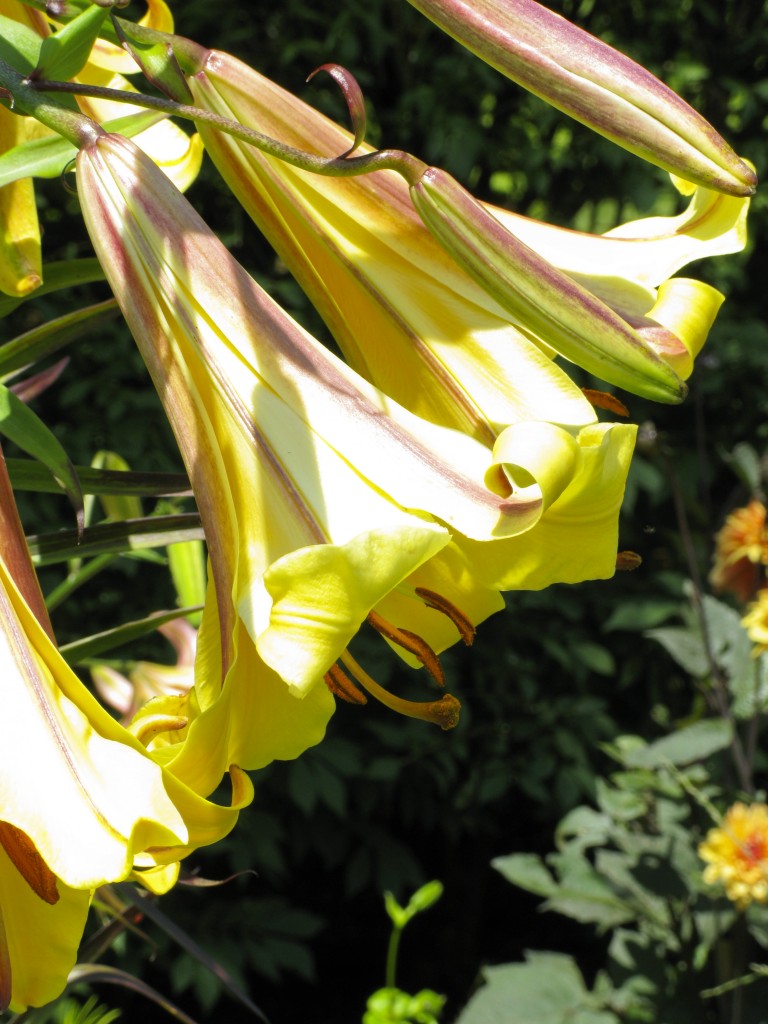
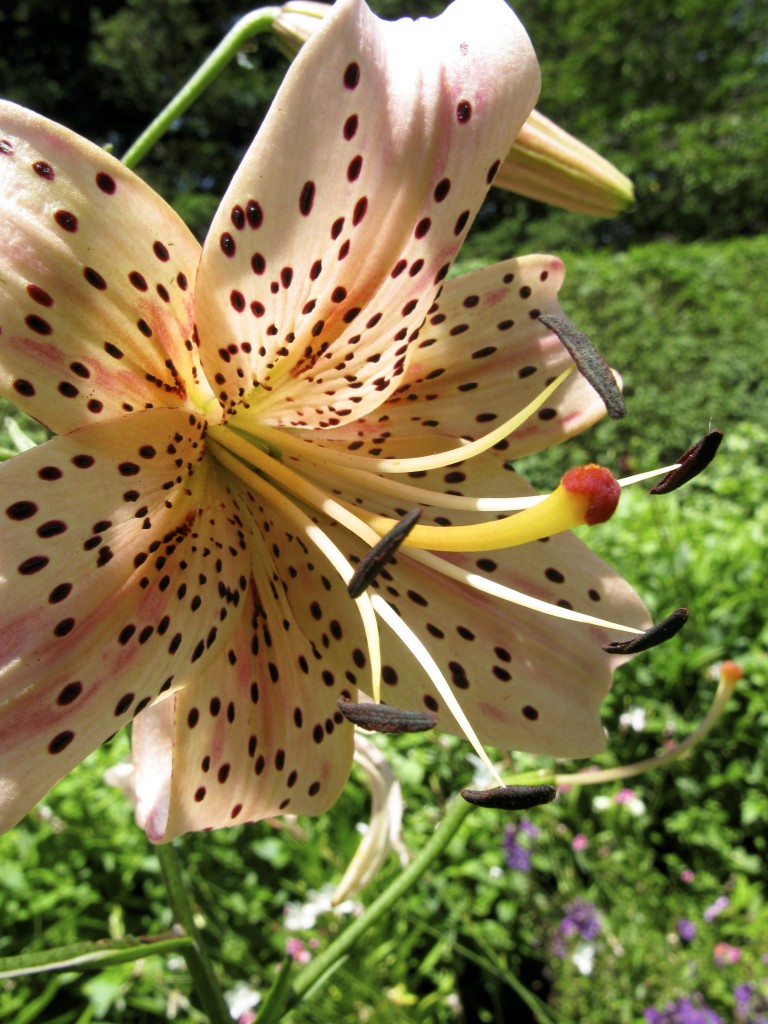
Photos 2, 4, and 5 by Ivo M. Vermeulen.
Posted in What's Beautiful Now on June 30 2011, by Ann Rafalko
Today I sauntered down Daylily Walk at lunchtime. Daylily Walk runs from Perennial Way (the road that goes in front of the Conservatory), past the Garden Cafe, down a little hill, and then takes a jag to the left running parallel to Garden Way (the road in front of the Library Building where the Greenmarket is held) (map). Daylily Walk is currently a riot of color and a study in fabulous plant names. Come check out the amazing diversity of daylilies!
Posted in Photography on June 30 2011, by Ann Rafalko
| Ann Rafalko is Director of Online Content. |
Hello everybody, Ann here. I’m back from my summer vacation, jet-lagged but so happy to be home for this beautiful New York City weather! My intention of blogging from the road was pure, but I was thwarted by technology. Who would have ever expected it would be so hard to find reliable wifi (or “weefee” as they say in France) in London and Paris? Regardless, I had a great, garden-inspired trip. Here are some pictures I snapped on a rainy day visit to the Royal Botanic Gardens, Kew.
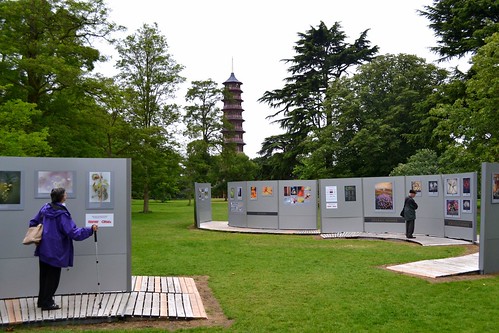
If you win one of the categories or special commendations in the IGPOTY contest, your photos will be on display at this beautiful outdoor exhibition at Kew Gardens. The photos are printed onto a special kind of vinyl and hang outside year-round. The exhibition is right near the main gate, and is therefore one of the first stops for Kew’s many visitors. The quality of the winning IGPOTY photographs is extraordinary, so hone your chops by joining in on one of our monthly photo contests. I can’t wait to see at least one photo from NYBG hanging here next year!
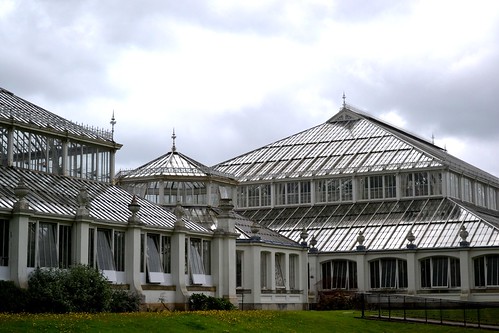
There are three main glasshouses at Kew, and many smaller, secondary houses as well. They are very old and very lovely.

Both the Temperate House and the Palm House have catwalks around the upper levels that you access by climbing these mysterious-looking, vine-laden staircases.

These catwalks give you an unusual perspective on trees that is nearly impossible to gain in nature.

As might be expected, rain is a common occurrence, so don’t forget to bring an umbrella. Of course, if you forget yours, though (like I did), the shop sells very nice ones.
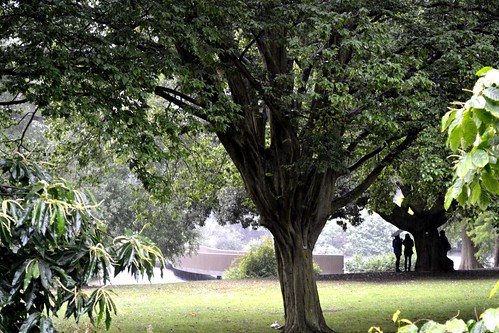
Should you choose not to use an umbrella, however, there are plenty of trees to shelter under while waiting for the showers to pass. This one is near the Sackler Crossing, a really cool walkway/bridge over Kew’s big lake.

One of my favorite things at Kew was this garden known at King William’s Temple. It is planted with flowers, trees, shrubs, and herbs from the Mediterranean, and smells divine, especially in the rain. It is full of lavendar, rosemary, olive trees, cypresses, and so many other plants. It reminded me quite a lot of our current exhibition, Spanish Paradise: Gardens of the Alhambra.

Just before I met up with two of my colleagues at Kew, I dashed through the Plant Families Beds and the Student Vegetable Plots just as the sun peeked out. This garden at the entrance to this area, at least to my mind, exemplifies everything that is beautiful about the English garden. It is a profusion of colors, heights, and textures, and is a joy to behold.

We’ve got beavers, Kew’s got badgers! I think I know which one I would prefer to run into on a dusky forest trail ….

And finally, I couldn’t possibly leave you without a shot of the structure that probably helped inspire the Garden’s founder, Nathaniel Lord Britton, to push the great men of New York City to found The New York Botanical Garden. The Palm House is an absolutely breathtaking work of engineering, and a great thing of beauty.
If you love The New York Botanical Garden, and you find yourself with a few days in London, you should absolutely go visit Kew Gardens. There are, inevitably, a lot of similarities between Kew and NYBG, but England’s climate, and Kew’s history, make the 30 minute trip out to Kew entirely worthwhile. I hope you have enjoyed my very brief tour of Kew, and that you’ll stay tuned next week for my adventures at Claude Monet’s garden in Giverny.
Special thanks to Mary from IGPOTY for showing me around Kew, and to Claire and Nicola at Kew for the cup of tea.
Posted in Around the Garden, Members, Photography on June 29 2011, by Ann Rafalko
Another beautiful pinhole photograph of the Peggy Rockefeller Rose Garden from NYBG Member and horticulturist Joel Kroin.
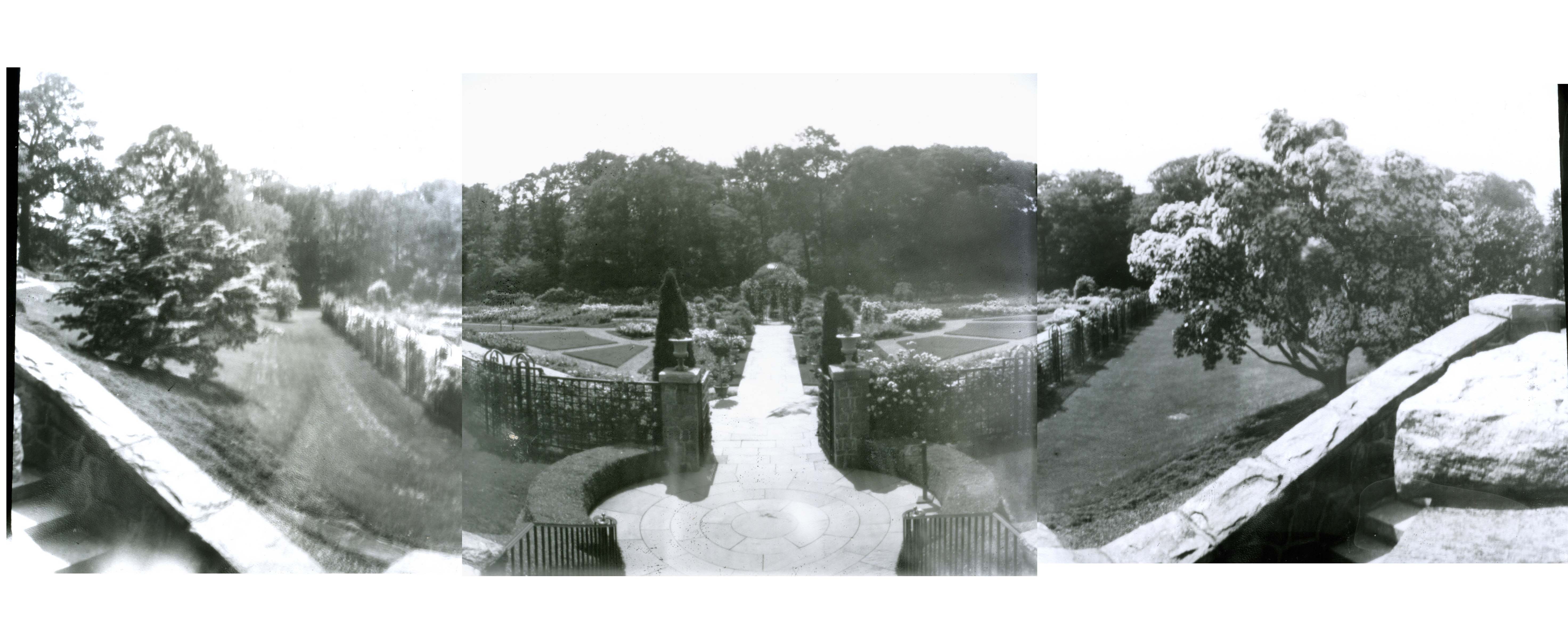 Click to enlarge image (Photos by Joel Kroin)
Click to enlarge image (Photos by Joel Kroin)
We’re so lucky to have such creative and enthusiastic visitors! Do you create art at the Garden? We would love to see it! If you would like your Garden-themed art featured on Plant Talk, email an example of your work and a little bit about yourself to blog@nybg.org.
Posted in Photography on June 28 2011, by Eddy Almonte
What do you spy with that little eye?
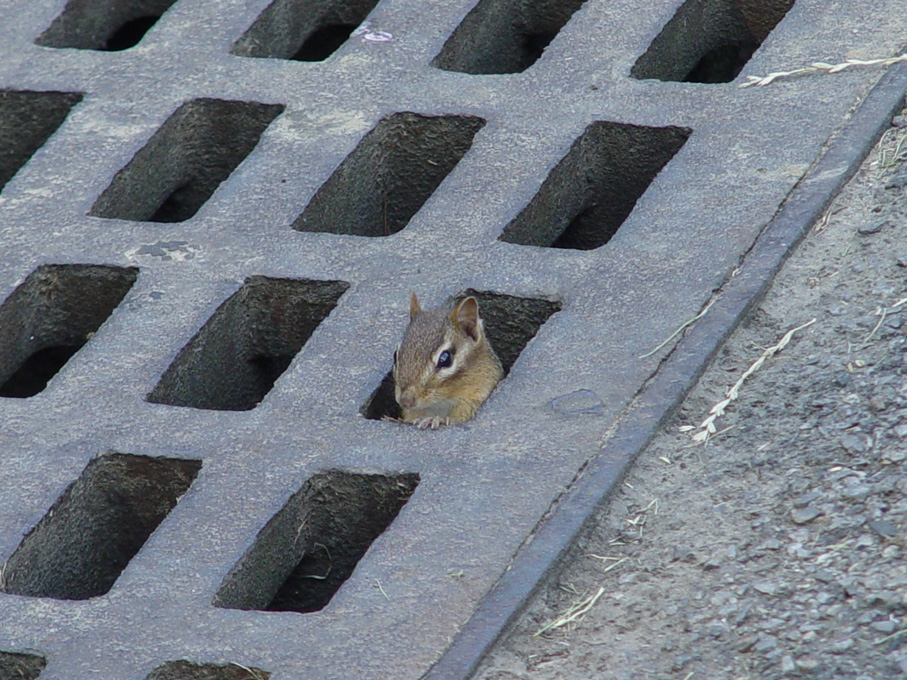
Posted in Around the Garden on June 27 2011, by Patricia Gonzalez
| Patricia Gonzalez is an NYBG Member and avid amateur wildlife photographer. She is especially fond of taking photographs at the Garden. |
In previous posts, I encouraged my fellow wildlife photographers to visit The New York Botanical Garden, shared one of my red-tailed hawk encounters, and gave tips on how to make the most out of your visit.
Today’s topic is the one thing that I think every New York City wildlife photographer should consider investing in. With this, not only will you have access to the grounds and great attractions the Garden offers year round, but you’ll also be able to enter the Garden before the public does. What is it? It’s an Annual Supporting Membership.
As a Supporting Member, not only will you get a neat membership card for yourself and one other person (which in turn, gets you into the Conservatory, Rock Garden, Everett Children‘s Adventure Garden, and more) both of you will get what I like to call “the golden ticket:” An early-morning grounds pass which grants you access to the Garden’s stunningly beautiful 250-acres before they open to the public at 10:00 a.m. With this pass, you can arrive as early as 6:00 a.m. and shoot till your heart’s content.
Birdwatchers will tell you that some of the best activity takes place in the morning. Think about it … With this one pass you gain the opportunity to shoot red-tailed hawks, owls, muskrats, rabbits, turtles, frogs, and way too many other species of birds to list, 52-weeks a year.
An annual supporting membership is $250. Yes, that might seem a bit steep, especially in today’s economy, but you can cut the cost in half if you join with another person. I convinced my best friend who is also an amateur photographer to join with me, which brings the cost down to $125 each. Although the membership is in my name, we both got individual membership cards and early morning grounds passes.
I look at it this way; the money is going to keep a place that I love operating. Just the opportunity to photograph hawks, owls, and other wildlife with only a few folks around 52-weeks a year is enough to get me to re-up every year. My last four close-up encounters happened before 7:30 a.m.!
You just show your pass to the security guard at either entrance and you’re in. During one of my more recent adventures, I came across two young great-horned owls and one of their parents in the native forest around 6:45 a.m. I was able to get some great shots and video.
If you just want to go solo and don’t care about the pass, then join as an individual at $75. You can check out all the different levels of membership here.
If you still need convincing, then go to my photo site and see for yourself. Look into the eyes of the owls, hawks and other wildlife and imagine yourself in the Native Forest, camera in hand, the smell of damp earth in the air and the sounds of the natural world around you. It doesn’t get any better than this.
Posted in Photography on June 27 2011, by Plant Talk
Loropetalum Fuchsia Chinese Fringe Tree maintains its maroon colored foliage from spring to fall.
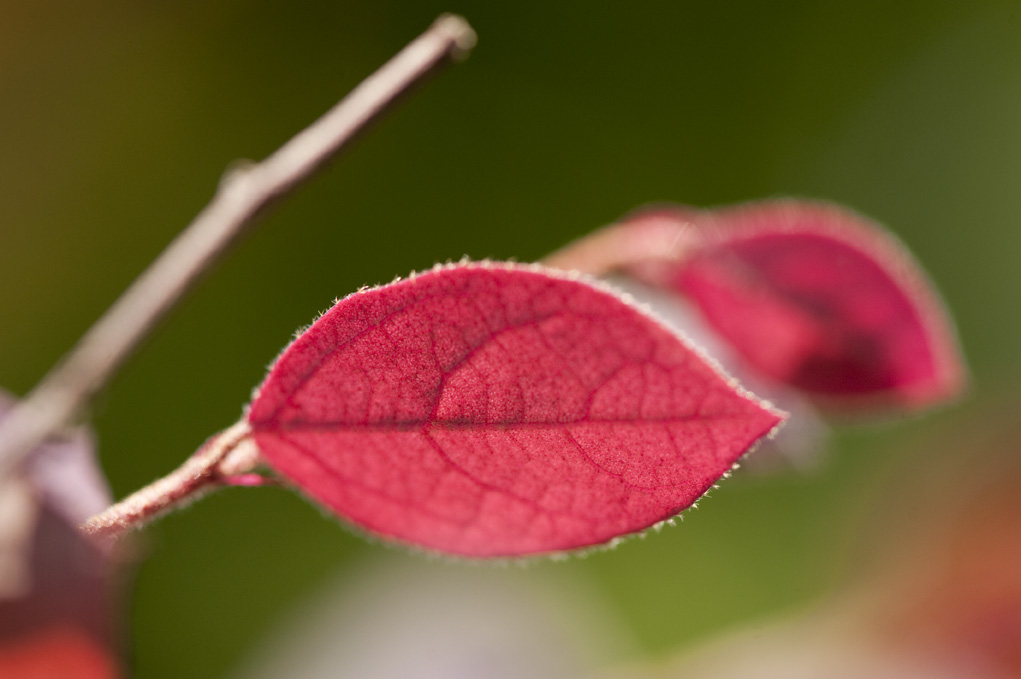
Loropetalum chinense f. rubrum ‘Zhuzhou Fuchsia’ (photo by Ivo M. Vermeulen)